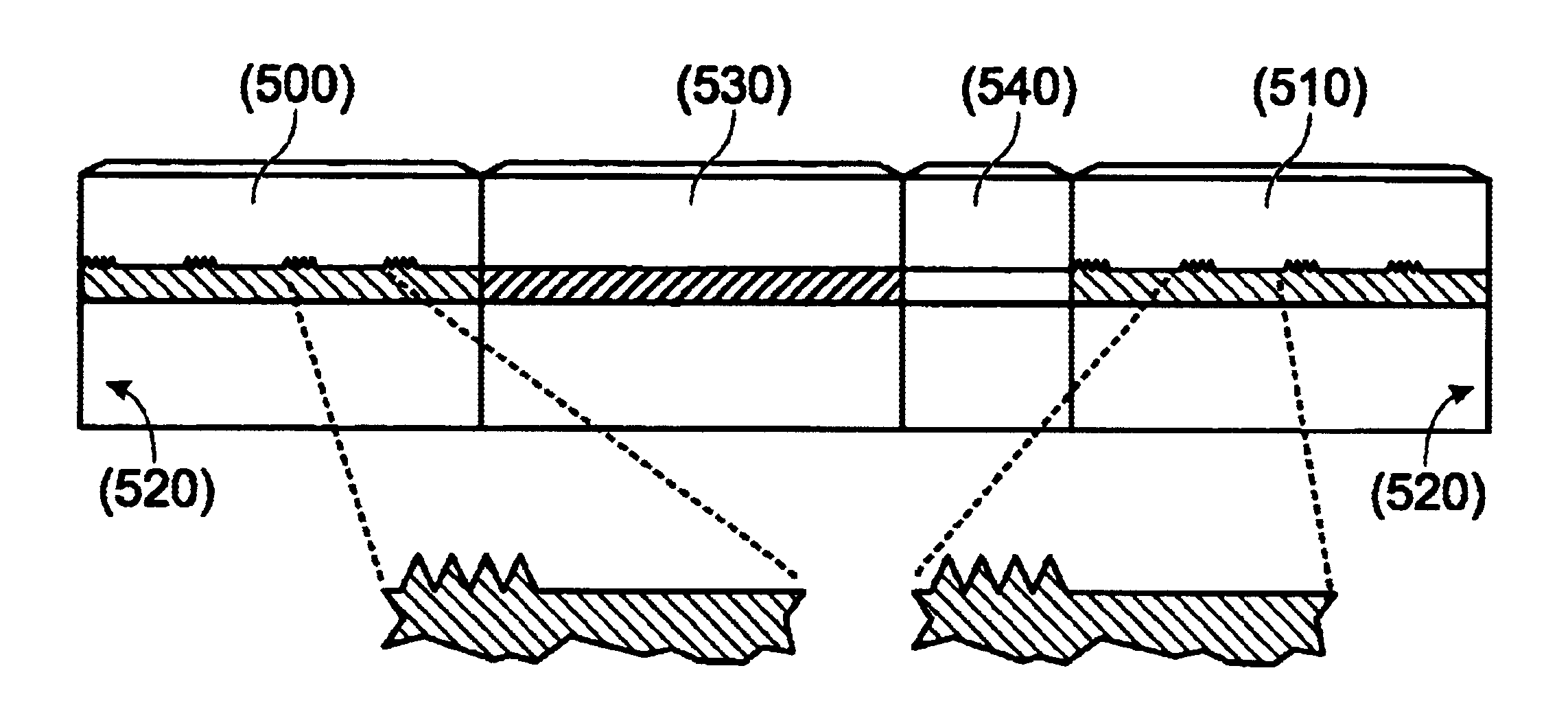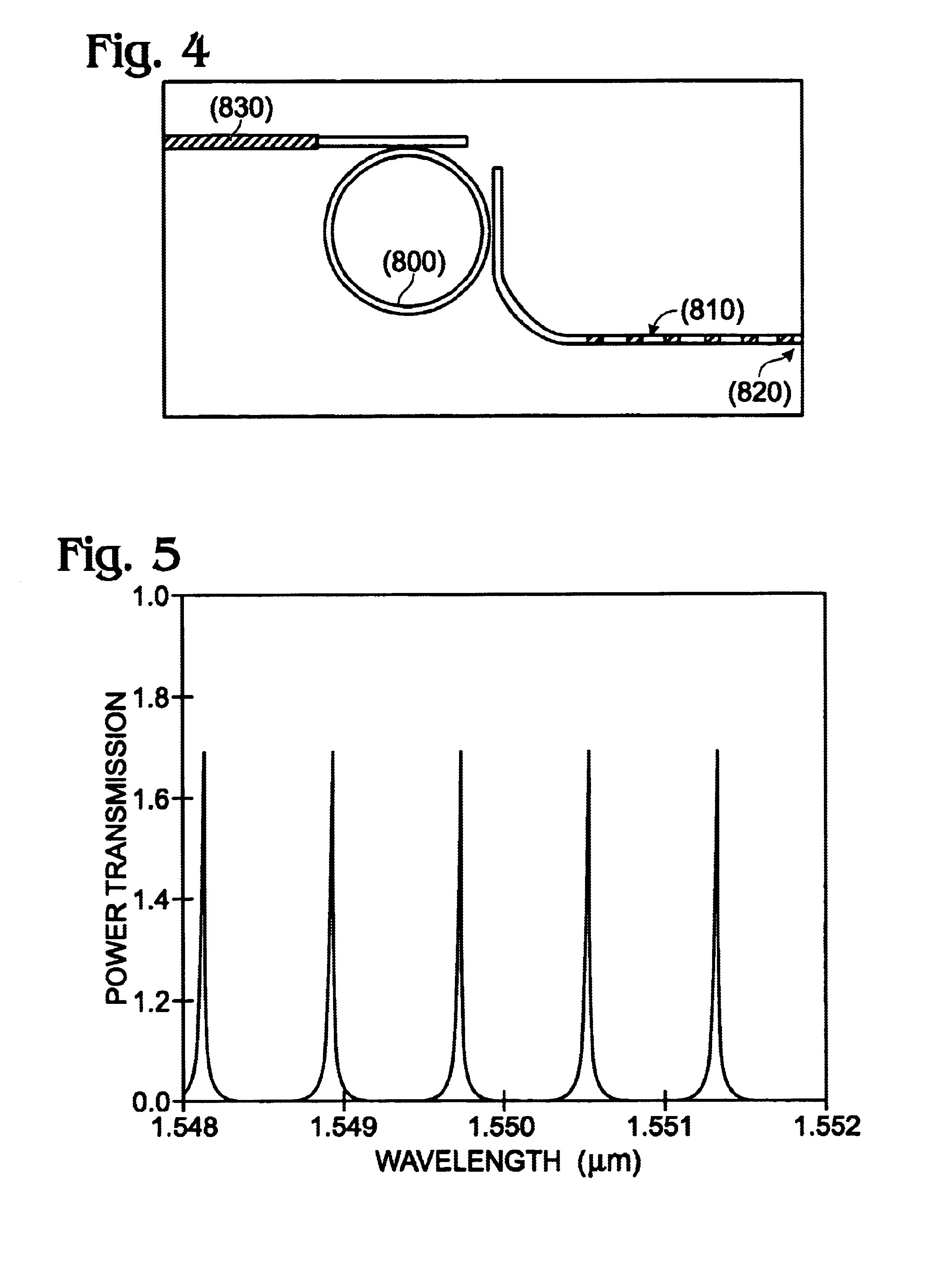Widely wavelength tunable integrated semiconductor device and method for widely tuning semiconductor devices
a semiconductor device and wavelength tunable technology, applied in the direction of laser cooling arrangement, laser details, electrical equipment, etc., can solve the problems of low selectivity and low tuneability of a conventional distributed bragg reflector (dbr) semiconductor laser, limited tuning of a conventional dbr semiconductor laser, and increase of two reflector sections, etc., to achieve low lasing output power loss, wide range of tuning, and easy manufacturing
- Summary
- Abstract
- Description
- Claims
- Application Information
AI Technical Summary
Benefits of technology
Problems solved by technology
Method used
Image
Examples
first embodiment
In a first embodiment, a Y-structure as in FIG. 3 is proposed with two reflectors 710, 720, placed on the same side of the active region 700. These two reflectors use sampled or super structure gratings to provide reflection combs with different periods; their design is the same as for (S)SG-DBR lasers. The power splitter 730 is used to split / combine the light leaving / entering the active region 700. Two phase control sections 740, 750 are shown in FIG. 3. One provides the correct phase relation between the signals reflected by the two reflectors, whereas the second provides control of the overall phase of the combined reflected signal. According to an alternative embodiment, a separate phase control section could be placed in each of the arms of the Y. The branches of the Y-structure could be all-active, thus avoiding a (technologically more complex) transition from an active waveguide to a passive one. However, this has the disadvantage that the device will be more difficult to con...
second embodiment
In a second embodiment, a second structure, which in a top view looks like in FIG. 8, is proposed. In this structure, a plurality of reflectors 440 (including reflectors 410, 420, 430) are placed on the same side of the active region 400. At least two of said reflectors use sampled or super structure gratings to provide reflections combs. At least two of said reflectors have reflection combs with different periods. The design of said reflectors is the same as for (S)SG-DBR lasers. The power splitter 450 is used to split and combine the light leaving / entering the active region 400. Phase control sections can be introduced. In one configuration one phase control section is placed between the active region and the reflectors and in all reflectors, except one, also a phase control section is provided. In another configuration only phase control sections are provided in said reflectors.
third embodiment
In a third embodiment, a third structure, as shown in FIG. 4, is proposed. The reflector consists of an active section 830, a ring resonator 800, which has a comb-shaped transmission characteristic (one example is shown in FIG. 5) and a (S)SG-reflector 810 with, in one embodiment, anti-reflective coating 820. The operation of a ring resonator is similar to that of a classic Fabry-Perot resonator, which can easily be understood if one thinks of the cross-coupling of the two couplers in the ring as being the transmission mirrors in the FP-resonator. The tuning is again based on the "Vernier"-principle, as in conventional (S)SG-DBR lasers: the ring resonator and the (S)SG-reflector are designed to have slightly different peak-spacing in their transmission and reflection characteristics respectively, and lasing occurs at or near the wavelength where two peaks overlap each other. A phase section, used to align a longitudinal cavity mode with the two aligned peaks, could also be included ...
PUM
 Login to View More
Login to View More Abstract
Description
Claims
Application Information
 Login to View More
Login to View More - R&D
- Intellectual Property
- Life Sciences
- Materials
- Tech Scout
- Unparalleled Data Quality
- Higher Quality Content
- 60% Fewer Hallucinations
Browse by: Latest US Patents, China's latest patents, Technical Efficacy Thesaurus, Application Domain, Technology Topic, Popular Technical Reports.
© 2025 PatSnap. All rights reserved.Legal|Privacy policy|Modern Slavery Act Transparency Statement|Sitemap|About US| Contact US: help@patsnap.com



